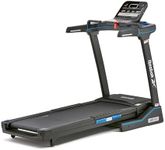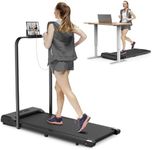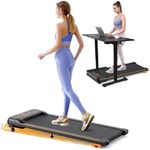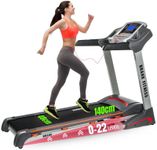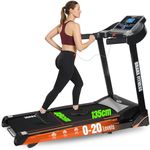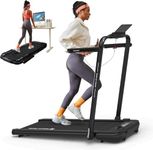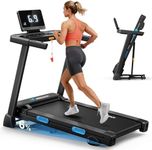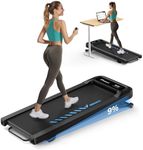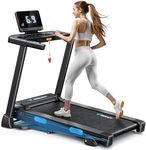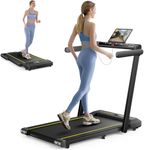Buying Guide for the Best Lightweight Treadmills
When choosing a lightweight treadmill, it's important to consider your specific fitness goals, available space, and how you plan to use the treadmill. Lightweight treadmills are ideal for those who need a portable option or have limited space. They are generally easier to move and store, making them a great choice for home use. However, they may come with trade-offs in terms of features and durability compared to heavier, more robust models. Understanding the key specifications will help you make an informed decision that aligns with your needs.Weight CapacityWeight capacity refers to the maximum user weight that the treadmill can safely support. This is important because using a treadmill with a weight capacity lower than your body weight can lead to damage or injury. Lightweight treadmills typically have a lower weight capacity compared to heavier models. If you weigh less than 200 pounds, most lightweight treadmills should suffice. However, if you are closer to or exceed this weight, you may need to look for a model with a higher capacity to ensure safety and longevity.
Motor PowerMotor power, measured in horsepower (HP), determines how smoothly and efficiently the treadmill operates. For lightweight treadmills, motor power is often lower, typically ranging from 1.5 to 2.5 HP. If you plan to use the treadmill for walking or light jogging, a motor on the lower end of this range should be adequate. However, if you intend to run or use the treadmill frequently, consider a model with higher motor power to ensure it can handle the increased demand without overheating or wearing out quickly.
Running SurfaceThe running surface is the area of the treadmill belt where you walk or run. A larger running surface provides more comfort and safety, especially for taller users or those with a longer stride. Lightweight treadmills often have a more compact running surface, which is suitable for walking or light jogging. If you have limited space or primarily walk, a smaller running surface may be sufficient. However, if you plan to run or have a longer stride, look for a treadmill with a larger running surface to ensure comfort and prevent accidents.
PortabilityPortability refers to how easy it is to move and store the treadmill. This is a key feature of lightweight treadmills, as they are designed to be more portable than their heavier counterparts. Look for features like transport wheels and a foldable design, which make it easier to move the treadmill around your home or store it when not in use. If you have limited space or need to frequently move the treadmill, prioritize models that emphasize portability.
Incline OptionsIncline options allow you to adjust the angle of the treadmill deck to simulate walking or running uphill, which can enhance your workout by increasing intensity and engaging different muscle groups. Lightweight treadmills may have limited incline options, often manual rather than automatic. If you are looking to add variety to your workouts or increase the challenge, consider a treadmill with adjustable incline settings. However, if your primary focus is on basic walking or jogging, incline options may be less critical.
Display and FeaturesThe display and features of a treadmill can enhance your workout experience by providing information and entertainment. Lightweight treadmills may have simpler displays and fewer features compared to more robust models. Basic displays typically show speed, time, distance, and calories burned. Some may offer additional features like heart rate monitoring or pre-set workout programs. Consider what information and features are important to you. If you prefer a straightforward workout, a basic display may suffice. However, if you enjoy tracking your progress or need motivation, look for models with more advanced features.
